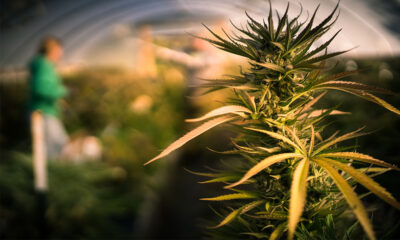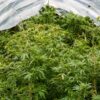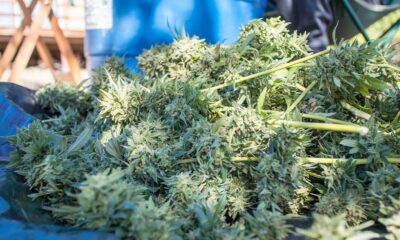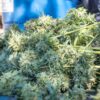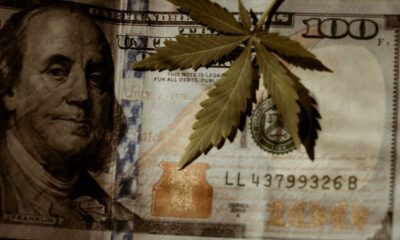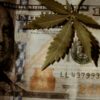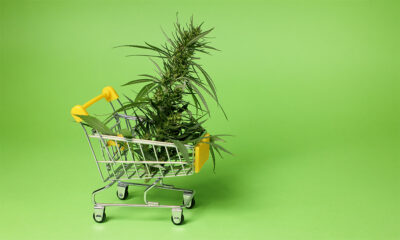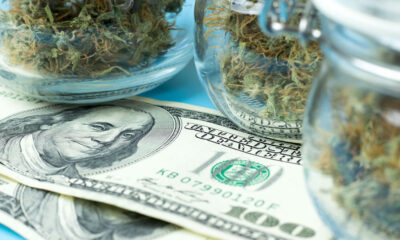
Economics
Carbon Dioxide Shortage Impacts Cannabis
A nationwide shortage of industrial carbon dioxide is affecting cannabis businesses that rely on the gas for their business operations.
Most American consumers are familiar with carbon dioxide, the ubiquitous gas that tickles the nose as a glass of freshly poured cola is enjoyed on a hot summer day. Beyond fizzy beverages, carbon dioxide (CO₂) is also used for a variety of applications across a gamut of industries. But a national industrial carbon dioxide shortage is threatening business operations and public services across the United States. NPR recently reported that the CO₂ shortage is causing prices to skyrocket, with some brewers reporting the rising costs of the colorless, odorless gas could cause beer prices to spike in turn. And late last month, officials in San Diego, California announced that four city pools would close because of the shortage of carbon dioxide, which is used to balance and maintain pH levels in pool water.
The shortfall in carbon dioxide is the result of market factors that have combined into what one industrial gas insider characterized as a “little bit of the perfect storm.” Two of the largest industrial gas companies in the US declined to comment on the carbon dioxide shortage. But Paul Pflieger, director of marketing and communications for the Compressed Gas Association, a trade association representing CO₂ suppliers including multinational corporations and family-owned businesses, agreed to field questions regarding the situation. He explains that the vast majority of industrial carbon dioxide is created as a byproduct of the production of ammonia for agricultural fertilizers and ethanol, which is added to gasoline. But market conditions caused by the pandemic have disrupted that supply chain.
“During Covid, people were obviously driving a lot less, so a lot of ethanol facilities actually shut down and haven’t come back online, which has reduced the amount of available CO₂,” Pflieger said in a telephone interview. “And then paired with that, during Covid, a lot of the ammonia plants in the US didn’t shut down as they were supposed to for normal maintenance, and then they scheduled their maintenance for this summer, and they have been shutting down for 30 to 60 days.”
Pflieger also noted that the shortage is exacerbated by the unplanned shutdown of carbon dioxide wells in Jackson Dome, Mississippi, a natural reservoir for the gas that was contaminated by impurities from an extinct volcano. The resulting shortage of both natural and produced carbon dioxide is causing problems across a wide range of industries that depend on CO₂ for their operations. Pflieger noted that the cannabis industry is a “relatively small percentage” of the total amount of industrial CO₂ used by American companies, with other sectors of the economy claiming the lion’s share of production.
“In the US. 77% of all CO₂ is used in food processing, dry ice and beverages. So that’s a huge amount of demand, especially in the summertime, when everyone is craving beverages—beer, soda, you name it—at a much higher rate, and dry ice is also being used more,” Pflieger says. “We’ve had a record hot summer. So, all of that goes into the demand being a lot higher. And with those shutdowns, the supply is a lot lower.”
Cannabis Companies Rely on Carbon Dioxide
Although cannabis companies only represent a small portion of the market for industrial carbon dioxide, the gas is crucial to the operations of many producers. Jigar Patel, the co-CEO of licensed cultivator NorCal Cannabis Company, notes that most indoor growers use supplemental carbon dioxide in their facilities to help maximize photosynthesis, which uses light energy to convert water and CO₂ into plant sugars that fuel growth. With plants growing at their full potential, the yield of cannabis flower is boosted at harvest time with supplemental carbon dioxide.
“In indoor cultivation, it’s pretty prevalent,” Patel explains in a phone interview. “Anybody that’s operating at the modern, controlled environment level is using CO₂ for plant growth. In a world where efficiency is king, especially given the current market conditions and pricing, CO₂ is vital to commercial growers and our ability to maximize our yield.”
The current shortage of carbon dioxide has left cannabis growers scrambling to maintain production. Patel notes that many cannabis cultivators have signed contracts with gas suppliers who provide the tanks and equipment needed to supply carbon dioxide to the plants. In return for making the supplier the grow’s sole supplier of carbon dioxide, the cultivator is spared the expense of installing the system.
“The Catch-22 there was most of these contracts don’t have an out clause for when they run out of CO₂,” Patel says. “So, your specific provider runs out of CO₂, you’re stuck between a rock and a hard place in terms of where you can turn.”
When shortages began to affect supplies of carbon dioxide, some suppliers allowed their customers to buy the gas from other companies. But before long, “even those vendors were having a shortfall,” causing growers to ration carbon dioxide and amend their standard operating procedures. With carbon dioxide in short supply, growers are often pumping fresh air into the growing space instead, which increases air conditioning expenses and other costs related to maintaining the proper growing environment. However, growers are unlikely to recoup their added expenses when they sell their crop, Patel says, noting that “we’re in the middle of a massive oversupply” that is depressing wholesale prices.
Some manufacturers of concentrates also use carbon dioxide in their production, using the gas instead of hydrocarbons or other powerful solvents to extract cannabinoids from plant matter. Dennis Hunter, co-founder of CannaCraft, says that the company, which uses carbon dioxide extraction to produce cannabis concentrates marketed by its AbsoluteXtracts brand, says that “we have had significant periods without CO₂ shipments and our CO₂ cost has risen significantly with the shortage,” adding the challenges have meant the company has had to alter its production plans.
“We have had to delay some operations for several weeks, refocusing our employee labor on production operations that do not require CO₂ as part of the process,” Hunter writes in an email to Cannabis Now.
Hunter agreed that it’s difficult to pass on the increased costs of carbon dioxide caused by the shortage to distributors and consumers, saying “the market is too competitive for the CO₂ shortage to result in an increase to our concentrates pricing. As the manufacturer, we will absorb the increased production costs so that they aren’t passed on to our retail partners and customers.”
Relief Is In Sight
The combined market forces of a shortage of carbon dioxide and the associated increased costs coupled with a glut of cannabis products depressing prices has the laws of economics squeezing cannabis operators from both ends of the supply chain. However, relief appears to be not far off.
“Luckily, a lot of the problems we’re seeing are going to fix themselves in the next 30 to 60 days,” Pflieger predicts. “A lot of the ammonia plants are coming back online. Hopefully, the temperature in the US is going to start to go down, and the natural wells are back online and they’re putting out clean CO₂. As an industry, we’re saying in the next 30 to 60 days, we expect things to start reaching a normal state.”
Patel acknowledges that the situation is beginning to improve.
“Our supplier this week was able to actually fill our tanks for the first time in four months, and appears to have more production online,” he reports. “I think as more and more Americans return to work, and the need for CO₂ across all industries begins to increase, we’ll see more and more producers and supply chains get back to their regular cadence.”
Hunter says CannaCraft isn’t expecting the supply of carbon dioxide to fully return to normal until the end of the third quarter, perhaps extending into the fourth quarter of 2022. Even so, he says the company is making costly investments to reduce its reliance on commercial supplies of the gas. With future shortages almost a certainty, it’s likely money well spent.
“This isn’t a new problem in the US. We’ve had CO₂ shortages for many, many summers,” Pflieger explains. “This one’s just exacerbated by other issues.”



